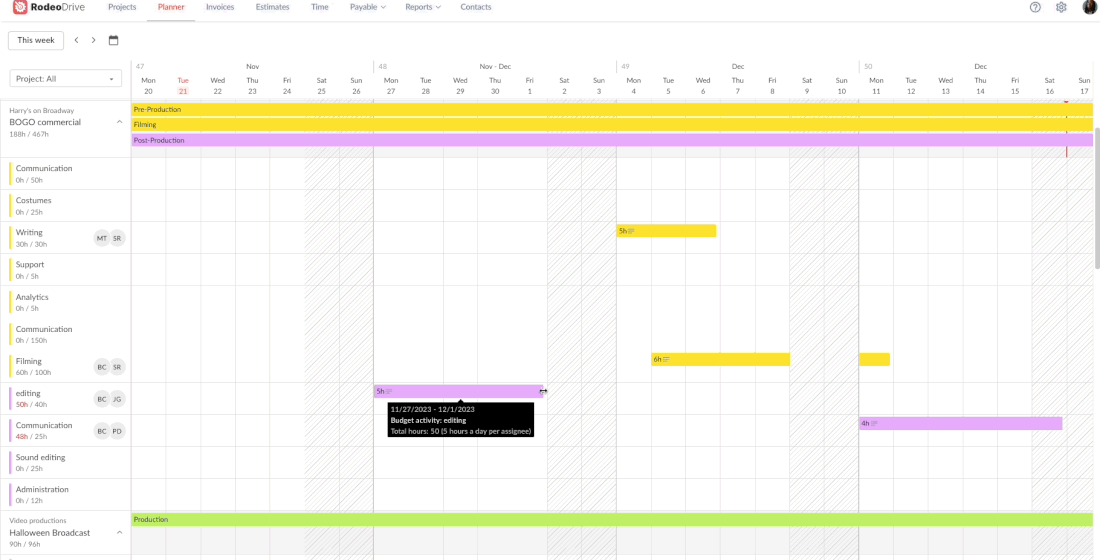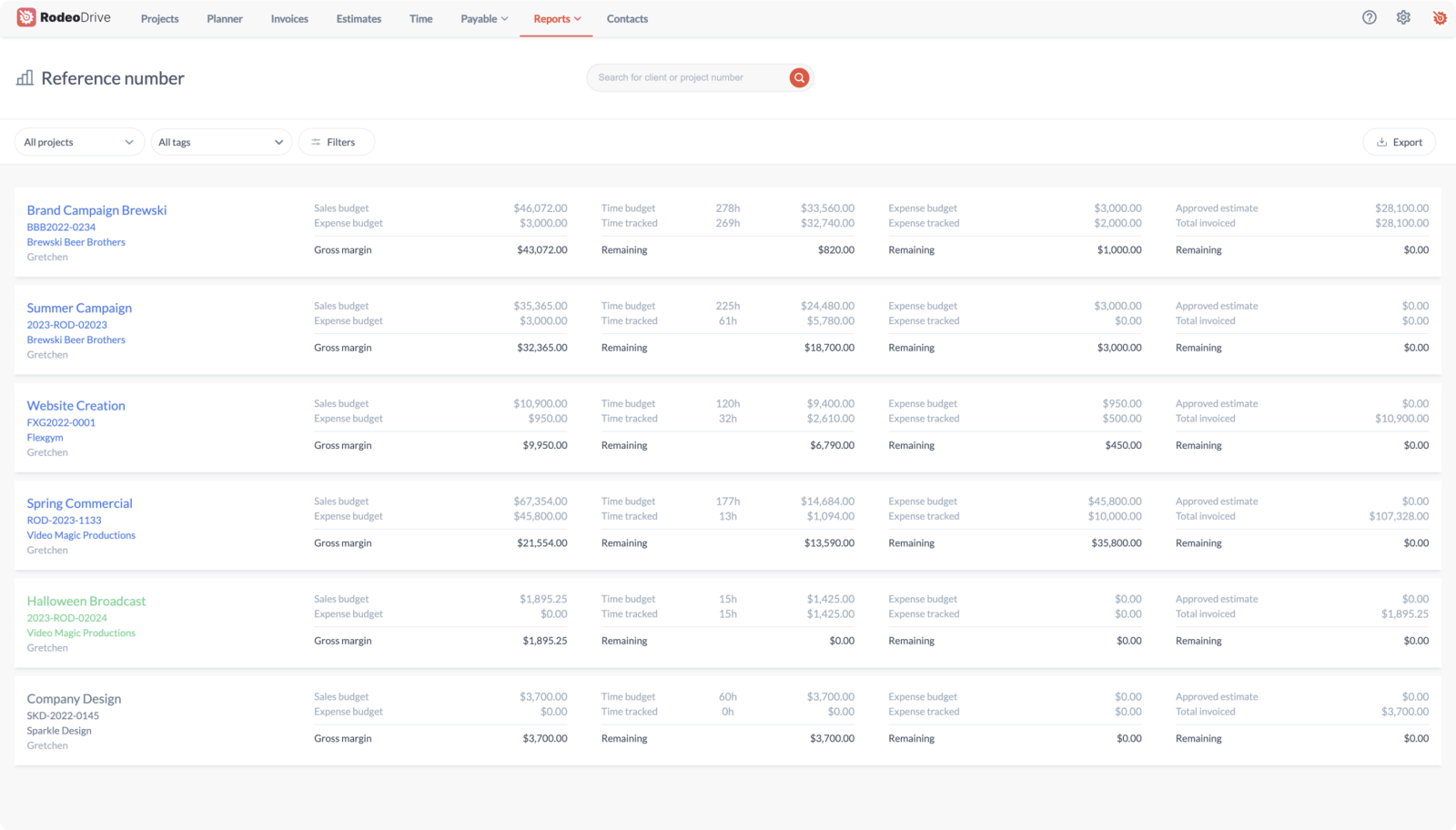How to Make Accurate Project Assumptions: A Complete Guide
Although robust and strategic project planning is the best way to set your team up for success, many project managers find that their project plans are filled with uncertainty and what-ifs.
After all, how can you predict how your project will play out? The short answer — you can’t. But when you take the time to brainstorm your project assumptions and think through their likelihood of occurring, you’ll be better prepared for the unexpected.
Let’s take a deeper look at what exactly project assumptions are, their different types, best practices, and how a project management software tool can help manage project assumptions more effectively.
What are project assumptions?
According to the Project Management Institute, assumptions are “factors that are considered to be true, real, or certain without proof or demonstration” that are made for planning purposes.
When planning out a project, you can’t know whether everything will go according to plan, which is why you need to make assumptions regarding how the project will play out.
Project assumptions have a ranging level of severity and likelihood of occurring. For example, it’s unlikely that your entire project team will quit at one time, but it might be more likely that your project deliverables might not resonate with your target audience, leading to subpar project outcomes.
Both of these examples are project assumptions, as project managers typically assume that their team will remain on board for the duration of the project and that the market research they’ve previously conducted is correct.
How do project assumptions differ from constraints, dependencies, and risks?
Project constraints, dependencies, and risks are all factors that project managers need to consider during the planning phase. For that reason, the differences between them can sometimes be confusing.
Here’s a rundown of each:
- Project constraints: The boundaries that your team must work within may be limiting. Project constraints include schedules, budgets, and the allocation of other resources.
- Project dependencies: Activities or tasks that can’t be completed until a different task or activity has been completed. For example, needing to gain client approval on designs before entering the next phase of a project would qualify as a dependency.
- Project risks: Unexpected events that have the potential to derail your project’s budget or timeline, should they occur. Project risks are often out of your control to some degree, although project managers should have a plan to mitigate them as much as possible.

So while you’ll have assumptions on your constraints and dependencies, they’re not the same thing as your project assumptions.
The same goes for your project risks. If your project assumptions aren’t validated, then they may turn into a risk that impacts your ability to deliver the project in line with expectations.
The different types of project assumptions
All parts of your projects come with assumptions. That said, failing to evaluate all possible project assumptions can land you in hot water.
That’s why having a complete knowledge of the different types of project assumptions can be helpful. That way, you can check each off your list when considering which pose risks that need to be accounted for in your project plan and then documented accordingly.
Resource assumptions
These assumptions are made regarding the availability and allocation of your project resources. This includes assumptions about your team’s access to tangible resources — such as physical equipment or materials — as well as intangible resources, like your project team members’ skills and expertise.
Adopting cross-functional collaboration among your team in addition to having a solid backup plan in case your project materials aren’t ready by the intended deadline is the best way to prepare for incorrect project assumptions.
Budget assumptions
As its name suggests, budget assumptions refer to your expectations of your project’s finances. Your project budget is entirely built on assumptions regarding how much everything will cost, and if they’re not made with proper cost management in mind, then they’ll likely cause issues later on.
But just like all project assumptions, sometimes the unexpected happens that you couldn’t have prepared for. A single inaccurate vendor estimate could cause you to have to modify several other budget assumptions, for example.
Environmental assumptions
Your environmental assumptions — sometimes called location assumptions — include project assumptions made about society or the world at large that may impact your project outcomes. Think of these as economic or political circumstances.
You can never prepare for all possible environmental assumptions, but some can be prepared for ahead of time with the right risk management strategy.
For example, a political event might spark a change in public opinion that impacts how your intended audience views your project outcomes. Or, a natural disaster may impact the availability of materials that your project needs for a successful completion.
Scheduling assumptions
This category of project assumptions is also frequently called time assumptions. These relate to the project schedule, activity duration, and activity sequencing. Think of them as any assumptions that might impact the project timeline in any way.
Most of the time though, project managers assume that their project schedule will progress according to plan, so long as there are proper time management strategies in place.
.png)
Scope assumptions
These are your project assumptions that have to do with the project boundaries and requirements outlined in your scope statement.
Your scope defines the goals, objectives, and deliverables that your project is expected to meet. As such, scope assumptions are anything related to project deliverables and features that you presume to be true.

Stakeholder assumptions
A project manager might assume that key stakeholders will be responsive and actively contribute to the project’s success and maintain the same priorities throughout the entire project life cycle.
These are considered stakeholder assumptions since they relate to the expectations and behaviors of your stakeholders.
You might also assume that your stakeholders will remain satisfied with the project’s original scope, although unfortunately, this isn’t always the case. Scope changes are common and can lead to scope creep, which has the potential to cause harm to your project outcomes.
When dealing with stakeholder assumptions, communication is key. You want to maintain regular communication either through meetings, emails, or phone calls so that you’ll immediately know if your stakeholders are shifting their expectations or interests.

Why is it important to document your project assumptions?
Project documentation is an important part of any project, as it creates a record of why certain decisions were made so that the project team can refer back to the relevant information throughout the project. It’s also crucial to have the right documentation in case stakeholders ask questions about past project activities or decision-making.
In any case, your project assumptions should be included in this documentation process, as your assumptions play a key role in risk management.
Although risk management is an ongoing process, your project assumptions are a key area where things will likely go wrong, since they are made without any evidence.
Writing down your project assumptions and noting how these assumptions might contribute to potential risks is a great first step in your risk management process.
Wondering what other risks you need to look out for? Check out our list of a dozen project management pitfalls you’ll want to avoid.
5 best practices for identifying the right project assumptions
Not all assumptions are created equal in project management, which is why it’s crucial to invest time into properly assessing your project assumptions early on.
Running an assumption analysis and creating an assumption log are two best practices to help your team steer clear of risks and deliver on-time results. Here’s a look at five steps to follow:
1. Identify your project’s critical success factors
Which parts of your project are most crucial to your project’s success? Which deliverables are highest priority for your stakeholders? Asking yourself questions like these can help you identify areas where you need to spend a little more time thinking through your project assumptions.
A bad project assumption made on your most important deliverable will have greater repercussions for the project than assumptions made on a minor early-stage deliverable, for example.
Another technique to help you do so is employing a Work Breakdown Structure (WBS), which serves as a way to divide your project into more manageable pieces via tasks and subtasks.
A WBS is a visual representation that typically adopts a hierarchical and deliverable-oriented approach, and as such, its visual nature can help ensure you don’t leave any project assumptions unaccounted for.
Related: Prioritising Tasks When Everything is Urgent: 10 Effective Strategies to Use
2. Run an assumption analysis
An assumption analysis is a project management tool that helps ensure that the assumptions you’re making don’t come with too much risk attached.
To do so, take your project assumptions list and perform a risk analysis to determine the likelihood of that assumption being false, and what would happen to the project if it were false.
Your low-risk assumptions — known as your assumptions that are most likely correct and have few consequences if they end up being false — don’t require a contingency plan, but you’ll want to make one for your high-risk assumptions.
3. Create a project assumptions log
Your project assumptions log — also called a project assumptions list — is the best way to document all of your assumptions. Each entry on this assumptions log should include a description, the date it was logged, who’s monitoring it, and the potential impact.
Be sure to record all assumptions in your project assumptions log, that way you have a single centralized place to refer back to when necessary later on.
Pro tip: Check out our related blog on 10 practical tips to create project lists.
4. Track your project assumptions
Your project assumption management process isn’t complete without a way to monitor whether these assumptions are true. Decide how often you’ll update your assumptions log — perhaps weekly for a shorter project or quarterly for long-term projects.
Once a project assumption has been validated, you’ll want to record the validation date in the assumptions log to ensure proper project documentation. Assigning ownership of various project assumptions among your team is a good way to ensure everyone’s keeping an eye on the right information.
You should’ve already estimated the level of risk associated with each assumption during your assumption analysis, but it’s important to utilize these learnings during the tracking phase as well, paying extra attention to those that are high risk.
Alternatively, if you need a better way to prioritize your project assumptions, you can assign them a confidence rating based on their potential impact and the risk they pose to the project’s success.

5. Make adjustments as you go
As your project assumptions prove to be true or false, your project plan will inevitably be in need of revisions and changes.
Because it’s crucial to make these adjustments quickly, you’ll need to have a change management process in place to make your life easier and allow the team to react faster. Don’t forget to keep a record of any adjustments made in your project assumptions log.
Examples of common project assumptions
Here’s a glance at what your project assumptions list might look like for a marketing campaign preparing for the launch of a new product:
- The product will be ready by the marketing campaign launch date.
- Your team has chosen the correct paid media channels for connecting with your target audience.
- Your team has correctly interpreted the regulatory requirements for marketing your product and sufficiently integrated them into the campaign messaging.
- There is sufficient market demand for your product.
- You’ve correctly identified the correct target audience for your product.
- The graphic designers on your team have the necessary skills to create advertisements that accurately convey your product’s value proposition.
- You will be able to monitor the success of your campaign using social media analytics, website traffic, and sales conversions.
Of course, this list is by no means exhaustive. If this were your project assumptions log, you’d also want to include the assumption date and a description of the potential impact, as well as other relevant details.
But overall, it’s important to consider the context of your project without taking anything for granted.
Monitor your project assumptions with Rodeo Drive
Successfully leading projects from planning to completion can be a pain without the help of a project management tool. That’s where Rodeo Drive can help.
Rodeo Drive is an all-in-one project management tool that specializes in making it easy to manage your project resources. Although the platform was built with the project needs of creatives in mind, any project-based team can take advantage of the tool.
With budgeting, time tracking, activity planning, reporting, invoicing, and more all available within a single app, your team can eliminate the time you’d otherwise waste switching between tools.
Here’s an overview of the features that make Rodeo Drive stand out:
Budgets that update in real-time as you track your hours
Budgeting is a key area of concern for clients and stakeholders, which is why Rodeo Drive prompts you to begin your project by building a budget.
All budgets in Rodeo Drive can be built in phases, meaning your project will be broken down into manageable chunks with all of your time and expense activities listed under each phase. That way, you can see what each project phase will cost you, as well as an automatically calculated total budget.

From there, you can send your budget to a client as a personalized estimate straight from Rodeo Drive. Add your own branding, terms and conditions, or a note. This makes the budget approval process easier than ever.
Keep an eye on your scheduling with our timeline-view planner
Poor project assumptions can have consequences for your schedule and the timeliness of your project delivery. Rodeo Drive helps combat that with the tool’s timeline-view activity planner.
With the planner feature, you can assign project activities based on your team’s current workload capacity and the expected duration of each activity.

If something doesn’t go according to plan, you can effortlessly rearrange tasks by dragging and dropping them to a different day or team member.
Reporting insights for better project monitoring
The best way to guarantee that your assumptions are as accurate as possible for your next project is by reporting data.

Rodeo Drive users can access all of their project data within the Reports tab, which includes insights into your project’s financial health, time registration, and employee productivity. Filter this data by status, date, or client for additional clarity.
Why not come see for yourself? Try Rodeo Drive risk-free today — no credit card required. Or, schedule a demo with a Rodeo Drive expert to learn more.








